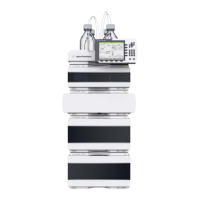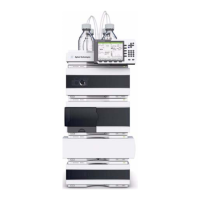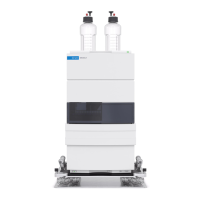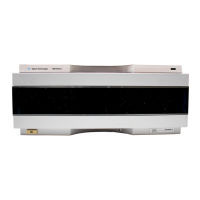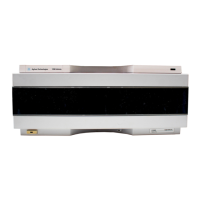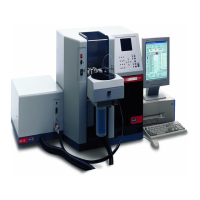254 1100 Series FD Reference Manual
7 Introduction to the Fluorescence Detector
quantification because of insufficient resolution. Check your proposed
PMTGAIN. If it is significantly distant from your setting, change your method
or check the purity of your solvent.
You can amplify the signal using PMTGAIN. Depending on the PMTGAIN you
have set, a multiple of electrons is generated for every photon falling on the
photomultiplier. You can quantify large and small peaks in the same
chromatogram by adding PMTGAIN changes during the run into a timetable.
Check proposed PMTGAIN. Deviations of more than 2 PMT gains should be
corrected in the method.
Each PMTGAIN step is increased approximately by a factor of 2 (range 0 - 18).
To optimize your amplification for the peak with the highest emission, raise
the PMTGAIN setting until the best signal-to-noise is achieved.
After the photons are converted and multiplied into an electronic signal, the
signal (at present analog) is tracked and held beyond the photo-multiplier.
After being held, the signal is converted by an A-to-D converter to give one raw
data point (digital). Eleven of these data points are bunched together as the
first step of data processing. Bunching improves your signal-to-noise ratio.
The bunched data, shown as larger black dots in Figure 87, is then filtered
using a boxcar filter. The data is smoothed, without being reduced, by taking
the mean of a number of points. The mean of the same points minus the first
plus the next, and so on, is calculated so that there are the same number of
bunched and filtered points as the original bunched points. You can define the
Figure 86 PMTGAIN: Amplification of Signal
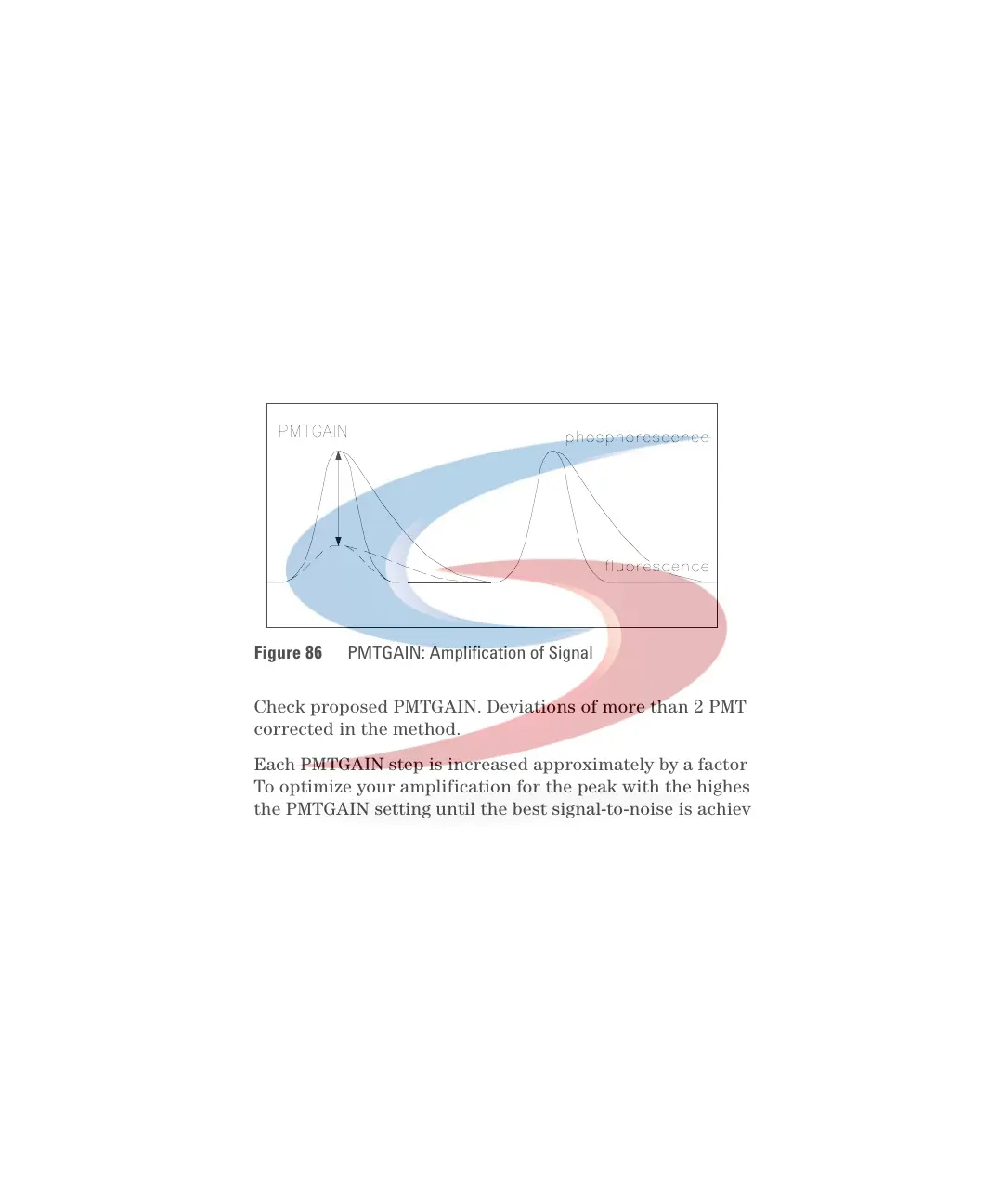